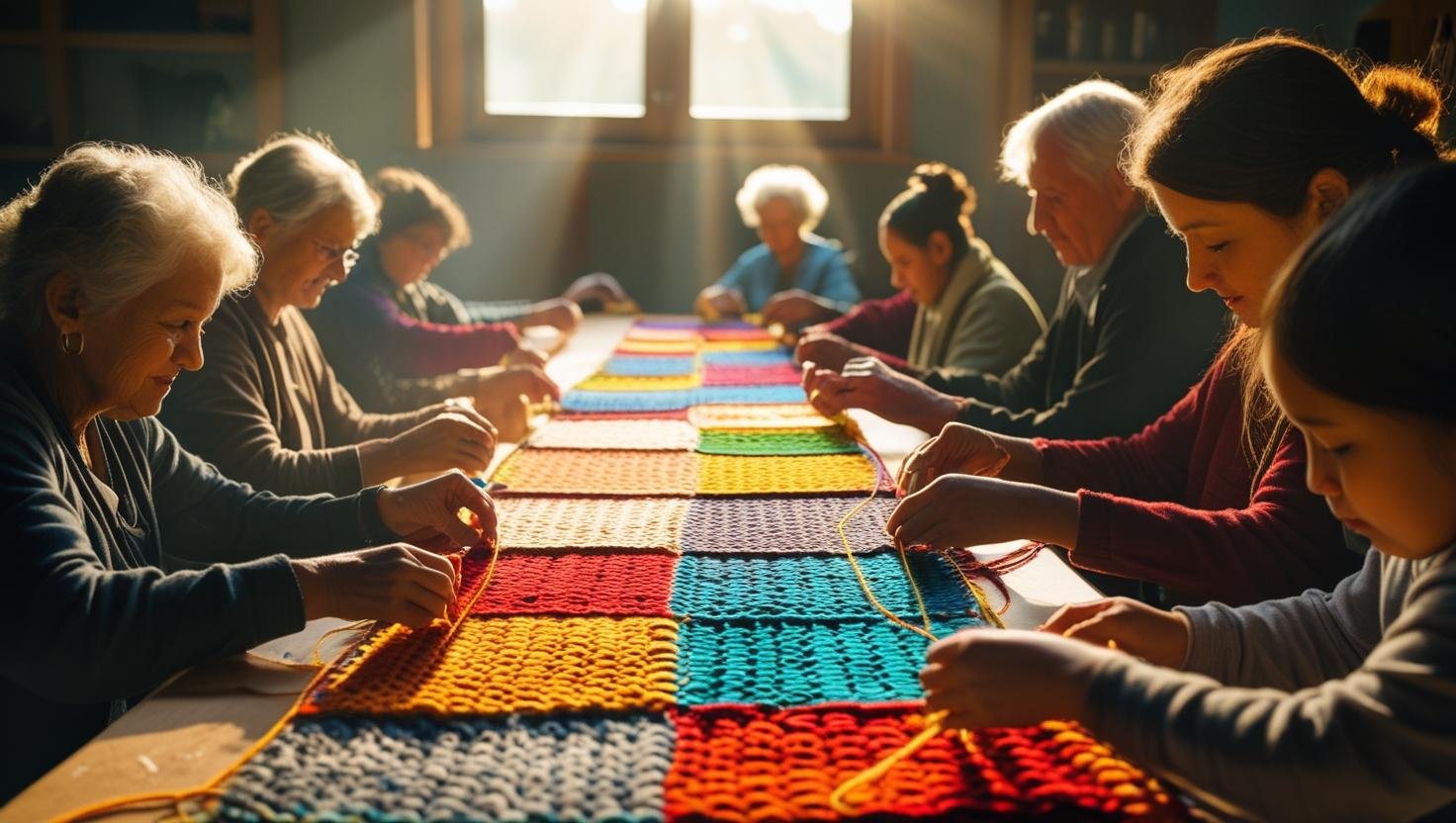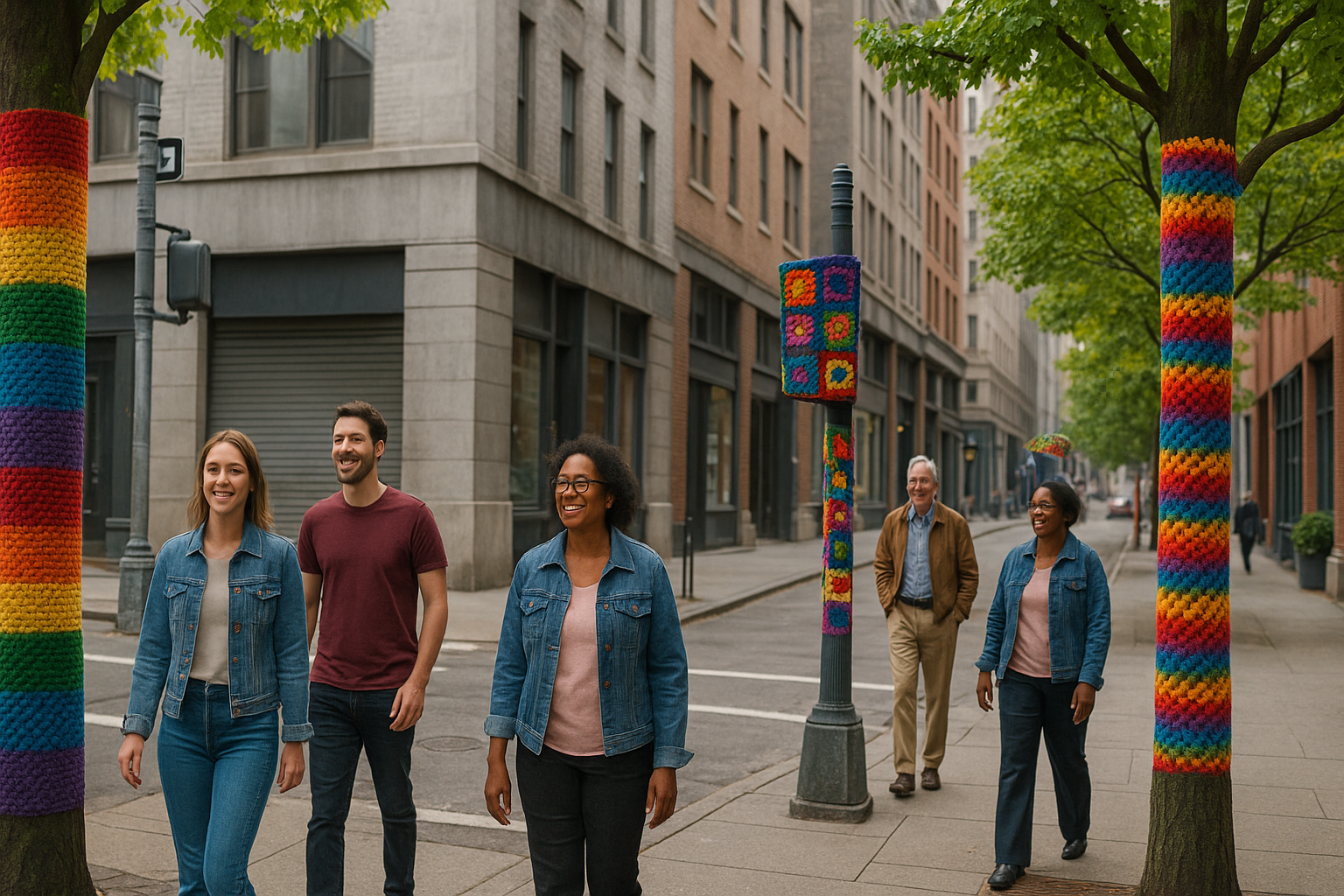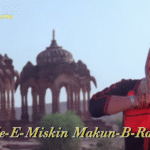Picture yourself standing on a city street and seeing a stack of rainbow-colored crocheted trees, a granny square-decked bike rack, or a fuzzy neon yarn-covered bench. Welcome to the fantastical, guerrilla knitting of yarn bombing, where knitting needles and yarn converge on street art in the most unexpected locations.
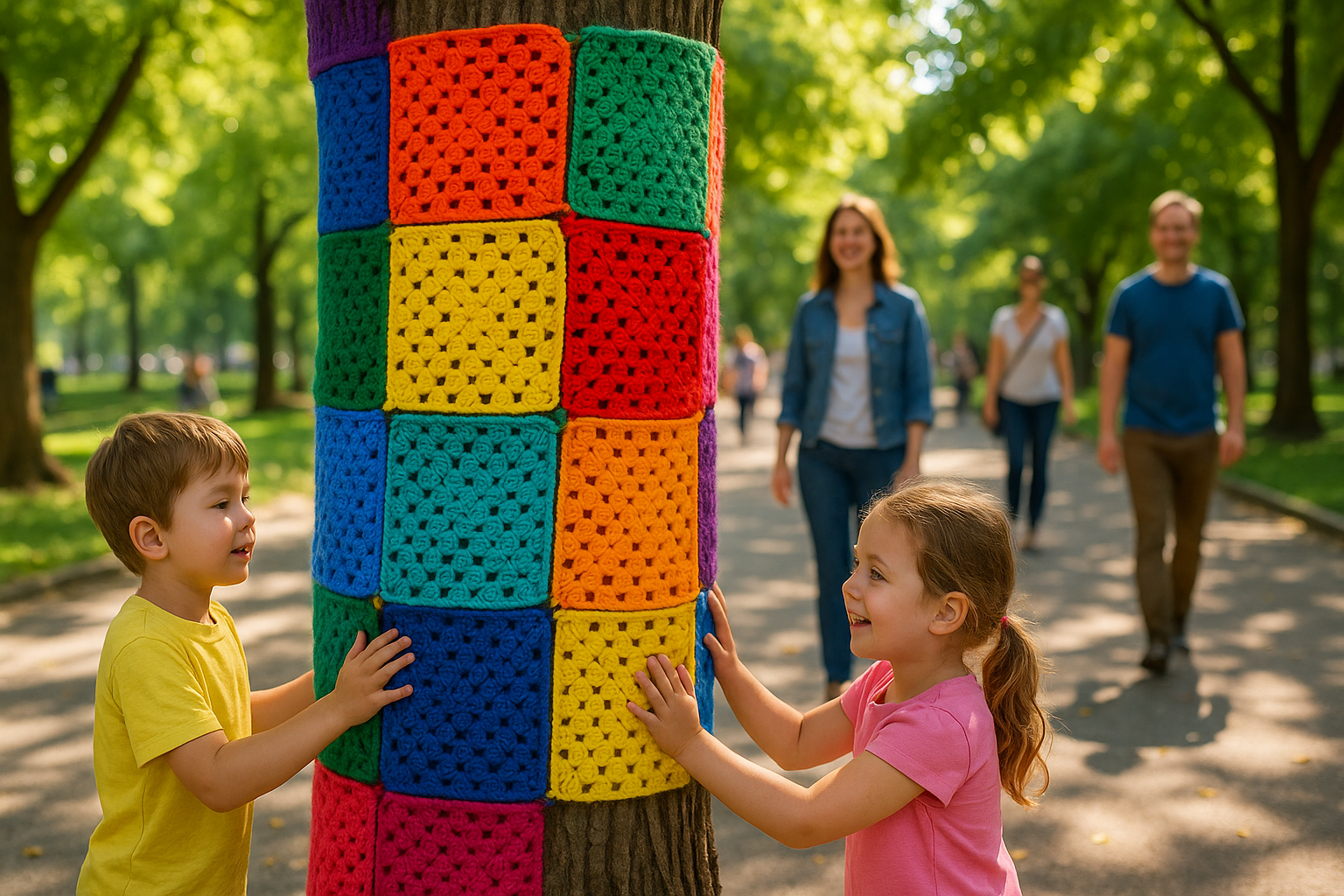
A Human Touch in a Concrete World
Cities may appear cold, grey, and uninviting. But what if they didn’t require a gallery? What if regular people, equipped with only yarn and imagination, could wrap joy around a tree or hug a mailbox with paint?
That is what guerrilla knitting – or knit graffiti – does.
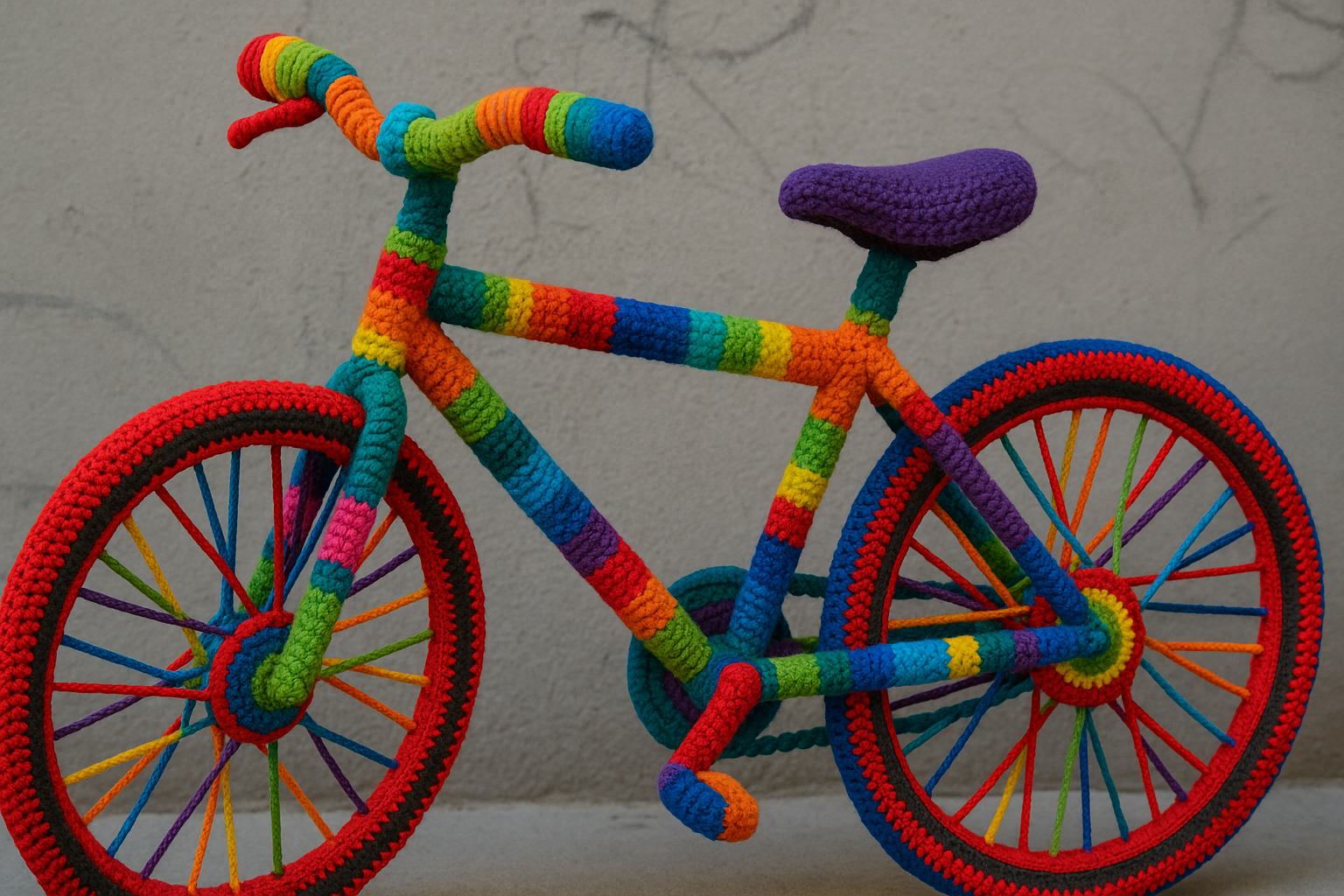
As opposed to the more common graffiti that usually accompanies risk and controversy, yarn bombing is gentle, temporary, and intimate. It does not destroy; it embellishes. It does not scream; it comforts.
What is Yarn Bombing?
Street knitting, yarn bombing, or knit graffiti is street art that employs crocheted or knitted yarn rather than paint or chalk. Yarn bombing is transitory, non-destructive, and tends to draw out smiles rather than tickets. “Yarn bombers” are artists who cover public items such as lamp posts, bike racks, statues, and fences with colourful yarn art to share joy, make a statement, or add surprise warmth to city sidewalks.
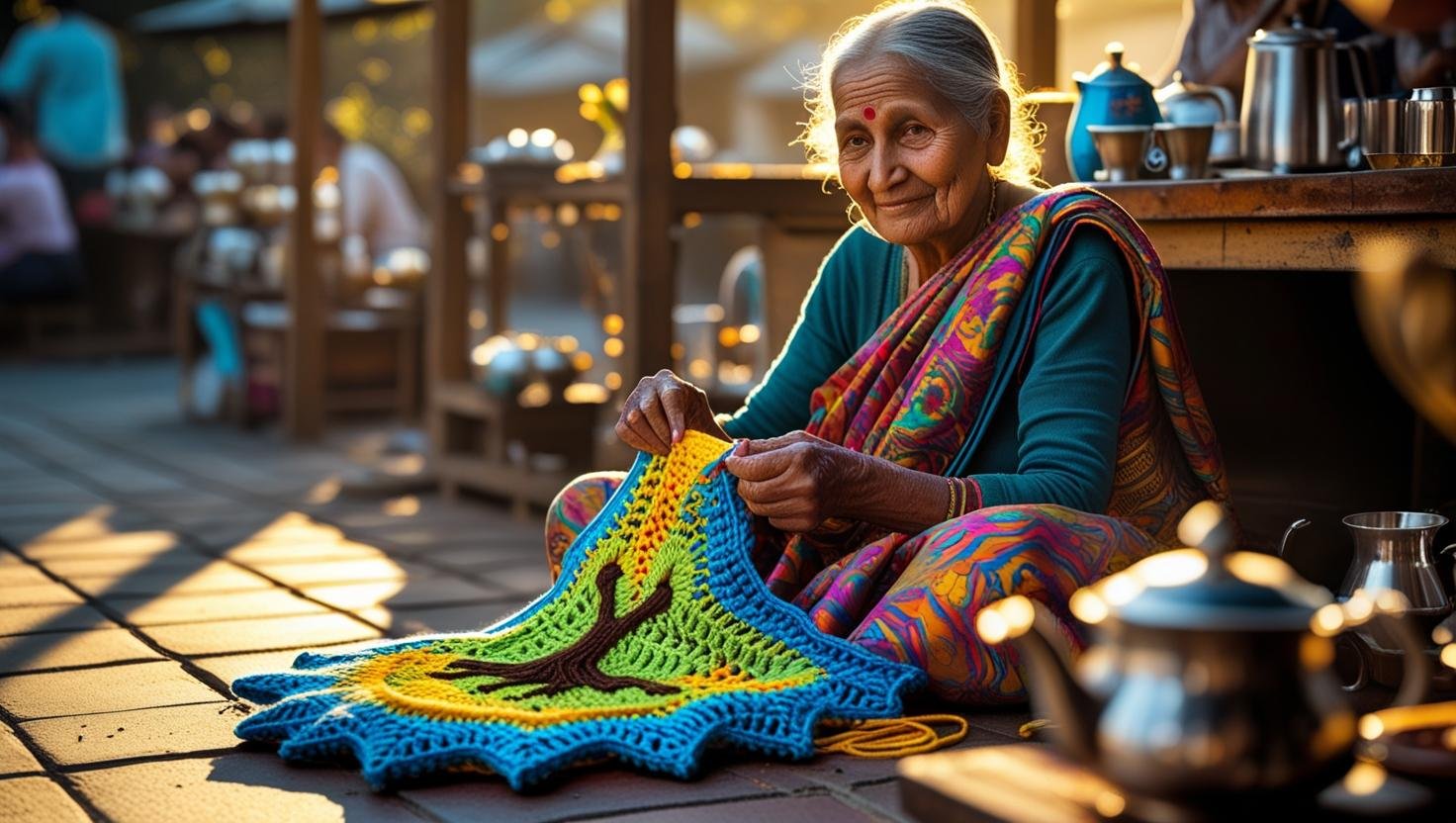
The History of Yarn Bombing
The yarn bombing phenomenon began in the early 2000s in the United States, one of the first discovered being that of Magda Sayeg of Texas. Her boutique door handle was yarn bombed with a knitted cosy, and the reaction was like a spark of electricity. Something done in the first instance as a personal gesture was now a global art phenomenon. On its travels from London to Tokyo, Johannesburg to Sydney, and between cities across the globe, it was yarn bombed.
Why Yarn Bombing Matters
In a steel, glass, and concrete-dominated world, yarn bombing is a quiet revolution. Here’s why this trend is so influential:
- Community Connection: Yarn bombing is an intergenerational art project usually carried out by local knitting groups, elderly artists, and schoolchildren.
- Urban Beautification: Instead of defacing, it enhances, transforming cold city structures into friendly landmarks.
- Silent Protest: Yarn bombers employ their craft to issue social or political commentary, but are friendly and non-violent.
- Mental wellbeing: In fact, knitting or crocheting is a therapeutic activity. Combined with the enjoyment of street art, it is a well-being source for the viewer and the artist.
World’s Most Iconic Yarn Bombing Projects
1. The Knit the City Collective (London, UK)
This crew invented “yarn storming” and famously yarn-wrapped phone booths, statues, and even tank sculptures, with amusing storytelling themes.
2. Linz, Austria – Trams Yarn Bombed
A public art initiative involved yarn wrapping a complete tram, a roving piece of art and a tourist attraction.
3. Yarn Bombing Los Angeles
An ongoing grass-roots process that collaborates with local institutions and museums to involve yarn art in cultural debate.
Why People Love Guerrilla Knitting
Here’s why yarn bombing is so effective:
-
It’s Surprising
In a world where we’re dashing from one responsibility to the next, a splash of surprise color on a bus sign can bring you up short.
-
It’s Accessible
You don’t have to be Banksy. Anyone with time, yarn, and needles can be a guerrilla knitting artist. It’s empowering grandmothers and Gen Z.
-
It Tells a Story
Most yarn bombings have underlying messages – about mental health, climate change, feminism, or community. Without using words, they say so much.
-
It Fosters Community
Knit-a-thons occur in a living room, in a park, or on the internet. Yarn bombing projects become family lore – a grandmother shows her granddaughter how to purl, and they wrap a tree together.
Real People, Real Yarn
Could you look at the case of Mira, a retired school teacher in Pune, India? She began crocheting after losing her husband. She wrapped rainbow-colored yarn around a tree near her housing complex one afternoon. The neighbourhood kids now call it the “Happy Tree.” She did not expect any notice – merely healing.
Or Rajesh, a Brooklyn high school student who learned how to knit through YouTube lockdown tutorials. Now, he commands a small guerrilla knitting brigade to cover abandoned bikes and chain-link fences in front of his school with colourful graffiti, transforming empty lots into happy splashes of colour.
These are not well-known artists. These are individuals like us, enveloping the world in warmth.
How to Start Yarn Bombing: A Step-by-Step Guide
If you want to get into yarn bombing, the following is how you can do it:
✅ Step 1: Learn the Basics
If you are new to knitting or crocheting, start with simple stitches. YouTube and free patterns on the Internet are great places to begin.
✅ Step 2: Choose Your Canvas
Select something in a public (or a private) environment that can benefit from some colour — benches, trees, bike racks, poles, or even statues.
✅ Step 3: Measure and Plan
Measure the object using a measuring tape. Make your piece of yarn fitted—stretchy yarn works best.
✅ Step 4: Stitch It Up
Do your work at home. You can pre-cut and assemble your work in panels and sew them together, or wrap on location with pre-made strips.
✅ Step 5: Install
Take some time to do your work in a quiet spot, especially if you don’t know the local laws. Sew or knot your work in place with yarn—don’t use glue or staples.
✅ Step 6: Document and Share
Report your project and post on social media using hashtags like #yarnbombing, #guerrillaknitting, or #urbanart.
Is Yarn Bombing Illegal?
Yarn bombing falls into a grey area. In most city centres, it’s tolerated — indeed, embraced — provided it’s respectful and non-destructive. It’s always best to:
• Avoid trespassing on someone’s property
• Comply with a non-invasive and removable mounting
• Respect public safety (do not cover signs, handles, or block)
If in doubt, query local authorities or start with private or semi-public communal spaces like parks or libraries.
Add Some Colour to Your City!
Did you spot a yarn bomb in your area — or create one yourself? Share your photos and stories in the comments below! Let’s sew kindness into our streets, loop by loop.

